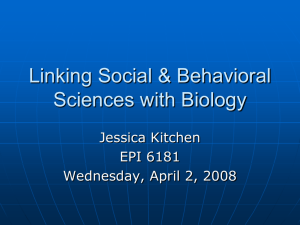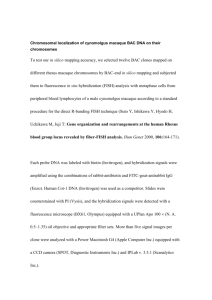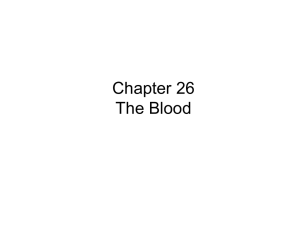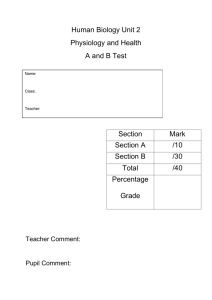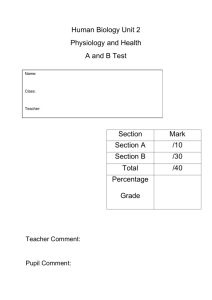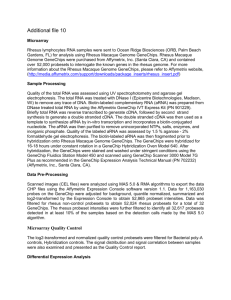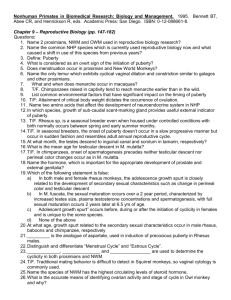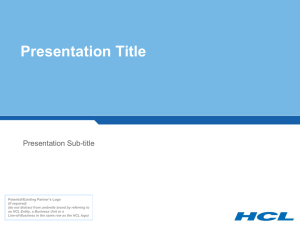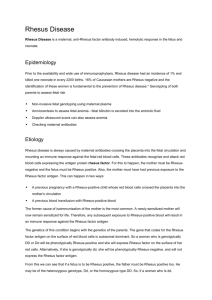Chapter 3 Nonhuman primate models of early development
advertisement
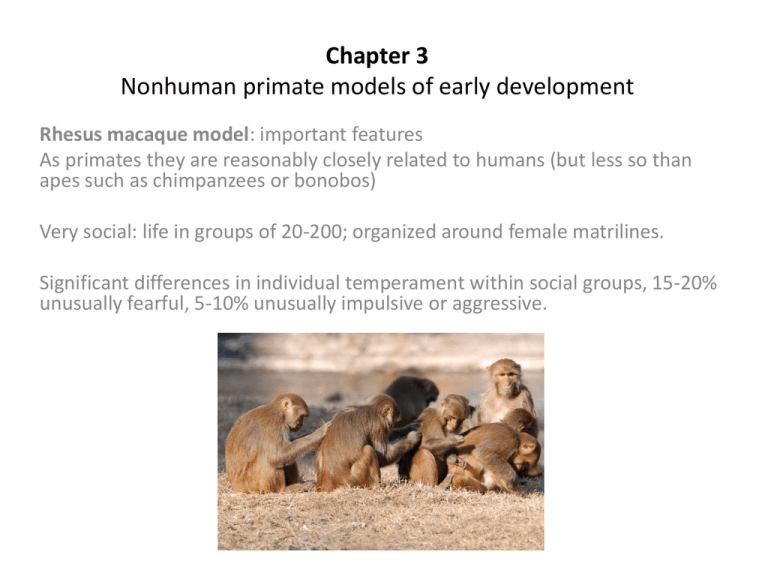
Chapter 3 Nonhuman primate models of early development Rhesus macaque model: important features As primates they are reasonably closely related to humans (but less so than apes such as chimpanzees or bonobos) Very social: life in groups of 20-200; organized around female matrilines. Significant differences in individual temperament within social groups, 15-20% unusually fearful, 5-10% unusually impulsive or aggressive. Development Rhesus developmental course: • First month in almost constant contact with mother. Strong emotional attachment. • Second, third months increasing interactions with peers • Fourth month (weaning), peers and play with peers becomes predominant social activity. Remains so until puberty. • Marked individual differences in temperament in peer play. Effects of Peer-only raising in Rhesus macaques. • Procedure: separated from moms at birth; raised by humans for first month; moved to peer groups of 3 or 4 beginning 2nd month; moved from peer group to larger social group at 6 or 7 months, larger social group usually has both MP (normal) reared and PO reared members. PO effects: • Development of hyperattachments to peers, dysfunctional, excessive clinging • Heightened fear response, little exploratory behavior, sig reduced play behavior • Heighted stress response: Hypothalamic-pituitary-adrenal (HPA) axis. • Increased aggression with age • Increased alcohol intake, when available Brain effects of PO: • Reduced cerebral blood flow, reduced serotonin activity • Enlarged regions of brain associated with stress: dorsomedial prefrontal cortex, dorsal anterior cingulate cortex. • Effects on immune function also found, inflammation response increase, antimicrobial response decreased HPA axis • Importance of HPA axis in stress response: ultimately leads to release of stress hormone cortisol. Cortisol feeds back on brain reducing HPA activity, thus creating a natural self-limiting effect of stress response. • However: Chronic activation of HPA axis (as might occur in stressful developmental situations) is implicated in parenting-related disorders such as post-traumatic stress and anxiety disorders. • Implication: abandonment of evolved parenting practices (EPP) – increased stress – increased probability of stressrelated disorders. EPP include: children embedded within families, multi-aged relatives, embedded within cultural practices. Stress and cognitive development Using hair cortisol levels (found to be more reliable measure than other way of testing cortisol levels and replicable in humans) • Increased hcl associated with increased trials necessary to pass object permanence tests in infant rhesus macaques. • In humans: increased HCL associated with lower performance on cognitive tests and depression and bipolar. Decreased HCL associated with generalized anxiety, PTSD, and panic associated with lower HCL. • In any non-typical rearing rhesus population, stress sharply increases HCL, only MP-reared showed little change in HCL despite stressors. • HCL was also predictive of later life anxiety in PO rhesus. Mother’s milk and stress • Along with important nutrients, fatty acids for brain development and energy; MM also provides hormones for the regulation of the HPA axis. • In rats, ingestion of MM has been shown to affect both cognitive (better spatial memory) and social (more play behavior) development. As adults, better regulated stress response. • In rhesus macaques: sons who received higher concentrations of cortisol in MM had higher “confidence” (bold, active, curious, playful) scores. Not so for daughters. • However, only study in humans found opposite result. Daughters had greater negative affectivity. Not so for sons.
